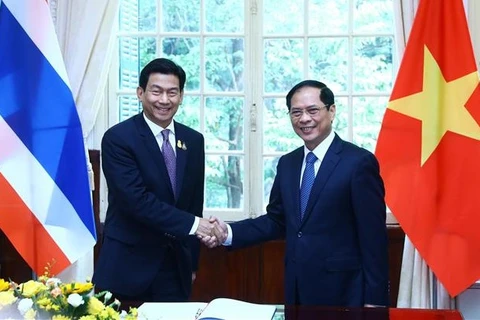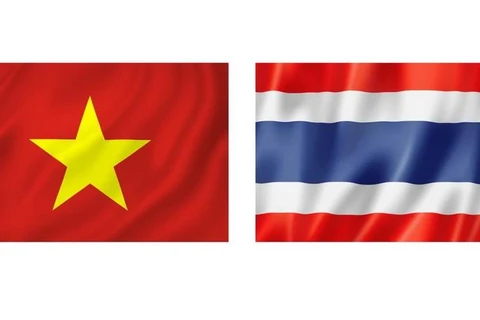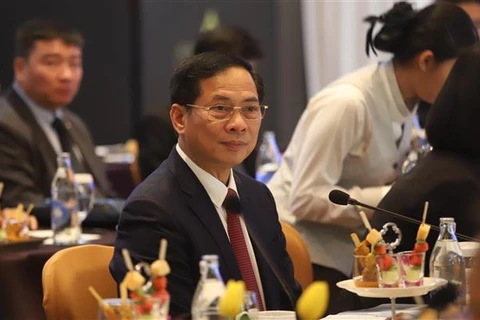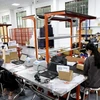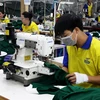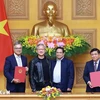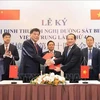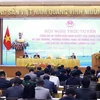Bangkok (VNA) - Demand for cooperation between Vietnam and Thailand is continuously expanding and new business opportunities will appear when both countries begin to develop new economic sectors such as green economy, circular economy, and renewable energy, according to Le Huu Phuc, Head of the Vietnam Trade Office in Thailand.
In the context that the two countries are striving to achieve the goals related to climate change response, especially net zero emissions, the Trade Office will make efforts to seek opportunities to connect enterprises in those fields, Phuc said, adding that this is also an inevitable trend and there remains ample room to promote the bilateral cooperation in the future.
Talking to the Vietnam News Agency (VNA)'s resident reporters in Thailand, Phuc shared that the office will focus on local economic cooperation, especially between Northeastern provinces of Thailand, which house a large number of Vietnamese people, and central provinces of Vietnam.
With geographical proximity, cooperation between these two regions can help Vietnam promote trade links with Thailand, especially border trade via Laos; and facilitate access to each other's market through local products under Thailand's OTOP (One Tambon One Product) programme and Vietnam's OCOP (One Commune One Product).
Regarding supply chain connectivity, the official said that the office will promote support for Vietnamese businesses in finding and building agents and expanding commercial presence in Thailand, while introducing and bringing Vietnamese goods to Thai supermarkets through cooperation with large supermarket systems in the country such as Central, Marko and TCC.
It will assist and boost industrial collaboration, especially in the automotive field such as finding and connecting manufacturers of component parts and accessories, added Phuc.
According to the official, the relationship between the two countries is developing fruitfully, creating favourable conditions for the implementation of economic diplomacy in Thailand. Since the establishment of the bilateral strategic partnership in 2013, two-way trade increased by 230% from 9.4 billion USD to 21.6 billion USD in 2022. Last year, the figure reached nearly 19 billion USD.
At present, Thailand is Vietnam's biggest trading partner in the Association of Southeast Asian Nations (ASEAN), while the latter is the former's No. 2 partner, after Malaysia.
In the context that the two countries are striving to achieve the goals related to climate change response, especially net zero emissions, the Trade Office will make efforts to seek opportunities to connect enterprises in those fields, Phuc said, adding that this is also an inevitable trend and there remains ample room to promote the bilateral cooperation in the future.
Talking to the Vietnam News Agency (VNA)'s resident reporters in Thailand, Phuc shared that the office will focus on local economic cooperation, especially between Northeastern provinces of Thailand, which house a large number of Vietnamese people, and central provinces of Vietnam.
With geographical proximity, cooperation between these two regions can help Vietnam promote trade links with Thailand, especially border trade via Laos; and facilitate access to each other's market through local products under Thailand's OTOP (One Tambon One Product) programme and Vietnam's OCOP (One Commune One Product).
Regarding supply chain connectivity, the official said that the office will promote support for Vietnamese businesses in finding and building agents and expanding commercial presence in Thailand, while introducing and bringing Vietnamese goods to Thai supermarkets through cooperation with large supermarket systems in the country such as Central, Marko and TCC.
It will assist and boost industrial collaboration, especially in the automotive field such as finding and connecting manufacturers of component parts and accessories, added Phuc.
According to the official, the relationship between the two countries is developing fruitfully, creating favourable conditions for the implementation of economic diplomacy in Thailand. Since the establishment of the bilateral strategic partnership in 2013, two-way trade increased by 230% from 9.4 billion USD to 21.6 billion USD in 2022. Last year, the figure reached nearly 19 billion USD.
At present, Thailand is Vietnam's biggest trading partner in the Association of Southeast Asian Nations (ASEAN), while the latter is the former's No. 2 partner, after Malaysia.
Thailand now has more than 700 valid projects in Vietnam with combined investment of nearly 15 billion USD, ranking 9th among foreign investors in the country. Meanwhile, Vietnam's investment in Thailand remains modest with a sum of 32 million USD, focusing on consumer goods and distribution./.
VNA

